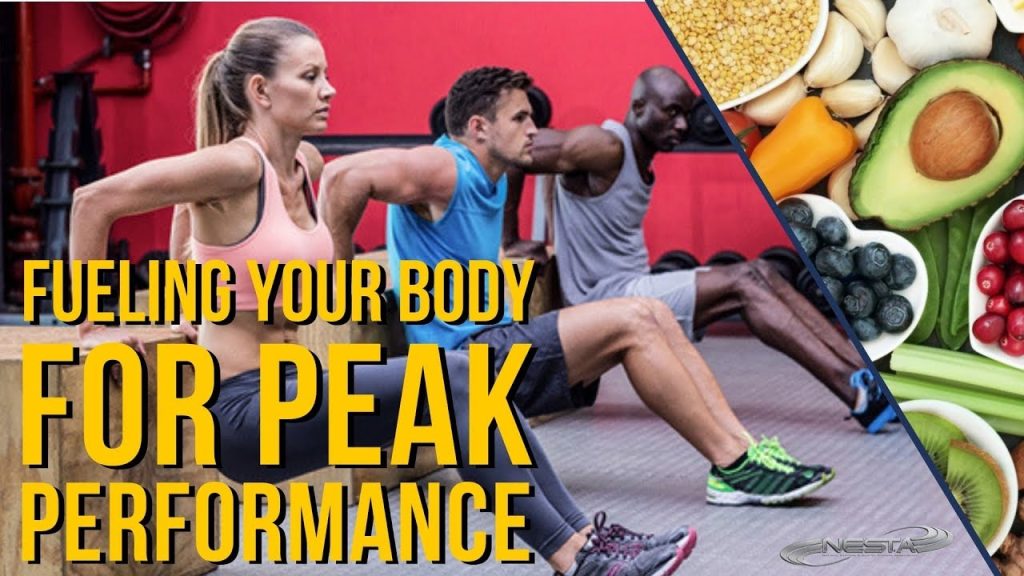
Introduction
Want to perform at your best in 2025? Training like a professional athlete means more than intense workouts—it’s about smart planning, balanced nutrition, quality recovery, and a winning mindset. Pro athletes follow proven principles: they lift with purpose, fuel with precision, rest strategically, and use the latest tech to track progress. You don’t need a full team of coaches to apply their methods. This guide shows you how to train like a pro athlete for peak performance. We’ll cover core training principles, periodization, nutrition strategies, recovery techniques, mental skills, and tech tools. By the end, you’ll have a clear roadmap to transform your routine and reach new heights in strength, speed, and endurance.
What are the Core Training Principles?

Progressive Overload
At the heart of every pro’s routine is progressive overload—gradually increasing the stress on muscles to spur adaptation. Start with a weight or intensity you can handle for your target reps. Each week, add small increments—2–5% more weight, one extra rep, or a few seconds of added time. This gradual challenge forces your body to grow stronger and more resilient.
Specificity and Functional Movements
Pro athletes train movements, not just muscles. A sprinter emphasizes powerful hip extension through squats and plyometrics. A football player works on agility drills and multi-directional lunges. Match your exercises to your goals. If you want to run faster, include sled pushes, broad jumps, and single-leg work. If you need upper-body power, push presses and plyo push-ups belong in your routine.
Variation and Periodic Deloads
Avoid plateaus by varying sets, reps, rest times, and exercise choices every 4–6 weeks. After a training block, take a deload week where you cut volume by 30–50% and focus on movement quality. This helps prevent overtraining and injury while keeping gains steady.
Balance Strength, Power, and Endurance
Pro athletes blend strength (heavy lifts, low reps), power (explosive moves, moderate weight), and endurance (higher reps, short rest). A sample workout might start with heavy squats, move on to box jumps, and finish with kettlebell swings for endurance. This balanced approach ensures you build a well-rounded athletic profile.
How to Structure Periodization and Scheduling?

Understanding Periodization
Periodization is splitting your year into cycles:
• Macrocycle: your 12-month plan leading to a big goal, like a marathon or competition.
• Mesocycle: 4–12 week blocks focused on a quality (strength, speed, hypertrophy).
• Microcycle: weekly plans specifying workouts, recovery, and intensity.
Creating Your Macrocycle
Start by setting a target date. If your goal is a fall half-marathon, your macrocycle runs from winter base training, spring build phase, summer peak speed work, to fall taper and race. Assign mesocycles: base endurance, strength, speed, taper.
Weekly Microcycle Design
A balanced microcycle fits 3–5 workouts:
• Day 1: Strength – heavy lifts (squats, deadlifts)
• Day 2: Power – plyometrics, Olympic lifts
• Day 3: Rest or active recovery – light swim or yoga
• Day 4: Endurance – interval runs or circuit training
• Day 5: Mixed – strength endurance (higher reps)
Rotate blocks of 4 weeks on, 1 week deload. Always include at least one full rest day.
Tips for Consistency
Log each session—weight, reps, times. Review monthly to adjust loads. If progress stalls two weeks in a row, add a deload. Use auto-regulation: if you feel strong, push harder; if you’re fatigued, back off.
What are Nutrition Strategies for Peak Performance?

Balancing Macros for Energy and Recovery
Pro athletes aim for about 45–55% carbs, 20–30% protein, and 20–30% healthy fats. Carbohydrates fuel high-intensity work and replenish glycogen. Proteins repair muscle—aim for 1.6–2.2 grams per kilogram of body weight daily. Fats support hormones and joint health.
Nutrient Timing
Pre-workout: Eat carbs and protein 60–90 minutes before exercise. A banana plus Greek yogurt works well.
During long sessions: Sip a sports drink or energy gel after 45 minutes to sustain effort.
Post-workout: Within 30 minutes, have a 3:1 carb-to-protein snack—chocolate milk or a smoothie with fruit and whey protein. This jump-starts muscle repair.
Hydration and Electrolytes
Athletes lose salts through sweat. Drink 16–24 ounces of water two hours before training. During exercise over 60 minutes, use electrolyte mixes. After, replenish with water and a salty snack or recovery drink.
Supplements to Consider
Creatine monohydrate (5 g/day) boosts strength and power. Beta-alanine delays fatigue in high-intensity efforts. Omega-3 fish oil (2–3 g EPA/DHA) reduces inflammation. Consult your doctor before starting supplements.
Tips
Plan meals weekly and prep ahead to avoid skip days. Use apps to track macros. Listen to hunger cues—eat more on heavy training days, less on rest days.
What are Recovery and Regeneration Techniques?

Quality Sleep for Growth
Seven to nine hours nightly is non-negotiable. Sleep stages support hormone release—growth hormone peaks during deep sleep. Keep a cool, dark room and follow a wind-down routine: no screens 60 minutes before bed, light stretching or reading.
Active Recovery and Mobility
On rest or easy days, include low-intensity movement: walking, cycling, or swim laps. Spend 10–15 minutes foam rolling tight areas and working on dynamic mobility drills—leg swings, hip openers, thoracic rotations.
Cold and Heat Therapy
Contrast showers (alternating 1 minute cold, 2 minutes warm) boost circulation. Ice baths reduce inflammation after intense work. A sauna session warms muscles and aids relaxation. Choose what feels best—research shows both methods help recovery when used properly.
Massage and Manual Therapy
Regular sports massages ease muscle knots and improve blood flow. If massage therapy is out of budget, use a massage gun or stick on sore areas for 2–3 minutes per muscle group.
Tips
Schedule one full rest day per week. Keep training journal notes on soreness and energy to plan recovery methods proactively.
What are Mental Skills and Mindset Strategies?

Goal Setting and Visualization
Pro athletes set SMART goals—specific, measurable, achievable, relevant, and time-bound. They also visualize success in vivid detail: crossing the finish line, hitting the winning shot. Daily mental rehearsal builds confidence and neural pathways.
Focus and Flow Techniques
Use breathing exercises to center yourself before training and competition. The 4-7-8 method calms nerves: inhale for 4, hold for 7, exhale for 8. Pre-performance routines—like wearing the same socks or listening to the same song—signal the brain it’s game time.
Growth Mindset and Resilience
Embrace challenges as chances to learn. After a setback, reflect on what you can improve rather than dwelling on failure. Journaling progress, gratitude, and lessons helps maintain positivity.
Stress Management
High-level training can strain mental health. Schedule mental breaks—time with friends, hobbies, or nature walks. Consider mindfulness apps or working with a sports psychologist for a personalized approach.
Tips
Create a pre-training checklist: gear, music playlist, warm-up plan. This ritual locks in focus. Practice daily affirmations—“I am strong,” “I adapt quickly”—to reinforce belief.
What are Technology Tools for Tracking Progress?
Wearable Devices
Smartwatches like Garmin Forerunner or Polar Vantage track heart rate variability (HRV), sleep, training load, and recovery. HRV indicates your readiness: a high HRV means you’re well-recovered; a low HRV suggests rest.
Training Apps and Platforms
TrainingPeaks, Strava, and Final Surge let you plan workouts, log data, and share with coaches. They analyze trends—run pace, swim splits, cycle power—to spot gains and risks.
Home Equipment with Smart Features
Connected treadmills, bikes, and rowers offer guided workouts and metrics. Peloton, NordicTrack, and Hydrow provide live and on-demand classes with performance feedback.
Nutrition and Supplement Tracking
MyFitnessPal or Cronometer track macros, micronutrients, and supplement schedules. Linking them to training apps gives a full view of energy balance and nutrient intake.
Tips
Review weekly and monthly reports. Adjust training load and nutrition based on data. Set alerts for signs of overtraining—consistently low HRV, elevated resting heart rate, or poor sleep.
Table: Sample Weekly Pro-Athlete Style Plan
| Day | Focus | Example Session |
|---|---|---|
| Monday | Strength | Squats 4×6, Bench Press 4×6, Deadlift 3×5 |
| Tuesday | Power & Speed | Box Jumps 5×3, Sprints 10×60 m, Plyo Push-Ups 4×10 |
| Wednesday | Active Recovery & Mobility | Swim 30 min easy, Foam roll, Yoga stretches |
| Thursday | Endurance | Interval run: 6×800 m with 2 min rest |
| Friday | Mixed Strength-Endurance | Circuit: KB Swings 3×15, Pull-Ups 3×8, Lunges 3×12 |
| Saturday | Sport-Specific | Soccer drills, martial arts sparring, or cycle 60 min |
| Sunday | Full Rest | Sleep longer, light walk, meditation |
Conclusion
Training like a pro athlete in 2025 means blending proven science with smart tools. Follow progressive overload, periodized plans, and balanced nutrition. Recover deeply with sleep, mobility work, and therapy. Cultivate a strong mindset and use technology to track progress. By adopting these practices—strength, power, endurance, recovery, mental skills, and data—you’ll maximize performance and stay injury-free. Start applying one new habit each week, and you’ll build a champion’s routine in no time.
Call-to-Action: Ready to train like a pro? Download our free Peak Performance Checklist and start your personalized 12-week plan to reach your best shape in 2025!










